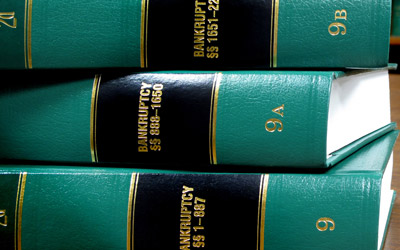FAQ'S
Retirement and Bankruptcy
1. What is the interplay between retirement and bankruptcy?
For the average American his retirement savings or pension rights are his single most valuable asset if he should file for bankruptcy. There are two major concepts that must be considered to determine whether creditors and bankruptcy trustees have any legal rights to the debtor’s retirement assets:
a. Is the retirement fund property of the estate?
b. If the retirement fund is property of the estate can it be exempted?
The United States Supreme Court has held that retirement plans that have a legally enforceable anti-alienation clause are not property of the bankruptcy estate. An anti-alienation clause is a provision preventing creditors from attaching the retirement funds of a debtor. Thus, retirement assets are not subject to the jurisdiction of the bankruptcy court, and they can’t be seized to pay creditors. Nearly all pensions and 401K savings plans that are qualified under ERISA, the federal pension savings act, have an anti-alienation clause that excludes them from the bankruptcy estate.
When retirement savings are property of the estate, because they are not ERISA qualified, or because they are held in an IRA, they may be exempted from the bankruptcy estate. Any property that is exempt is thus removed from the bankruptcy estate, and it can’t be used to pay off your creditors.
2. How has the new bankruptcy code impacted the treatment of retirement accounts in the bankruptcy process?
The new bankruptcy code has significantly expanded bankruptcy protection for many debtor’s retirement plans. Because of the Bankruptcy Abuse Prevention and Consumer Protection Act of 2005 (BAPCPA), many debtors who are facing bankruptcy can now shield their IRA assets from creditors. While retirement plans that satisfy the requirements of the Employee Retirement Income Security Act of 1974 (ERISA) — such as employer-sponsored plans like 401(k)s and 403(b)s — have long been excluded from an individual’s bankruptcy estate, BAPCPA has extended these bankruptcy protections to IRA’s and to certain other retirement type accounts.
This development now provides debtors who own IRA’s a degree of protection against creditors that didn’t exist before the law changed. Industry statistics show that the average worker changes jobs five to seven times during a career, resulting in many “orphan” IRA’s that debtors end up consolidating into a single IRA. These new developments provide additional protections for debtors who may have frequently changed jobs in their career.
3. What type of legal protection does BAPCPA provide for my IRA if I file for bankruptcy?
Here’s a quick overview of what these legal protections mean for debtors who also own IRA’s:
a. Contributory and Roth IRA assets are capped at an inflation adjusted amount of $1 million. BAPCPA offers protection for all contributory and Roth IRA assets up to a $1 million limit. This $1 million cap should provide ample protection for IRA investors, because it’s unlikely that many investors have accumulated over $1 million in their IRA’s.
b. Rollover IRA’s are exempted from bankruptcy beyond the $1 million limit. According to BAPCPA, qualified retirement plan assets that are rolled over to an IRA are completely exempt from bankruptcy proceedings, even if the amounts exceed the $1 million limit that’s in place for contributory or Roth IRA assets.
c. BAPCPA also covers SEP and SIMPLE IRA’s. Assets within Simplified Employee Plan (SEP) and Savings Incentive Match Plan for Employees (SIMPLE) IRA’s are excluded from bankruptcy proceedings — and they’re shielded for unlimited amounts. Additionally, BAPCPA provides bankruptcy protection for Keogh plans and independent (or “solo”) 401(k) plans, which are typically set up by someone operating a sole proprietorship. Because ERISA protections do not extend to either Keogh or independent 401(k) plans, the bankruptcy protections offered by BAPCPA provide safeguards for debtors that didn’t exist previously.
d. BAPCPA covers certain education savings vehicles. These include Coverdell Education Savings Accounts and state-sponsored Section 529 college savings programs. Specifically, BAPCPA protects any contributions made to these products for a child, grandchild, stepchild, or step-grandchild more than two years before the filing of the bankruptcy petition. However, money contributed to these products for a child, grandchild, stepchild, or step-grandchild that are made more than 365 days but less than 720 days before the bankruptcy filing are protected only up to $5,000 per beneficiary.






